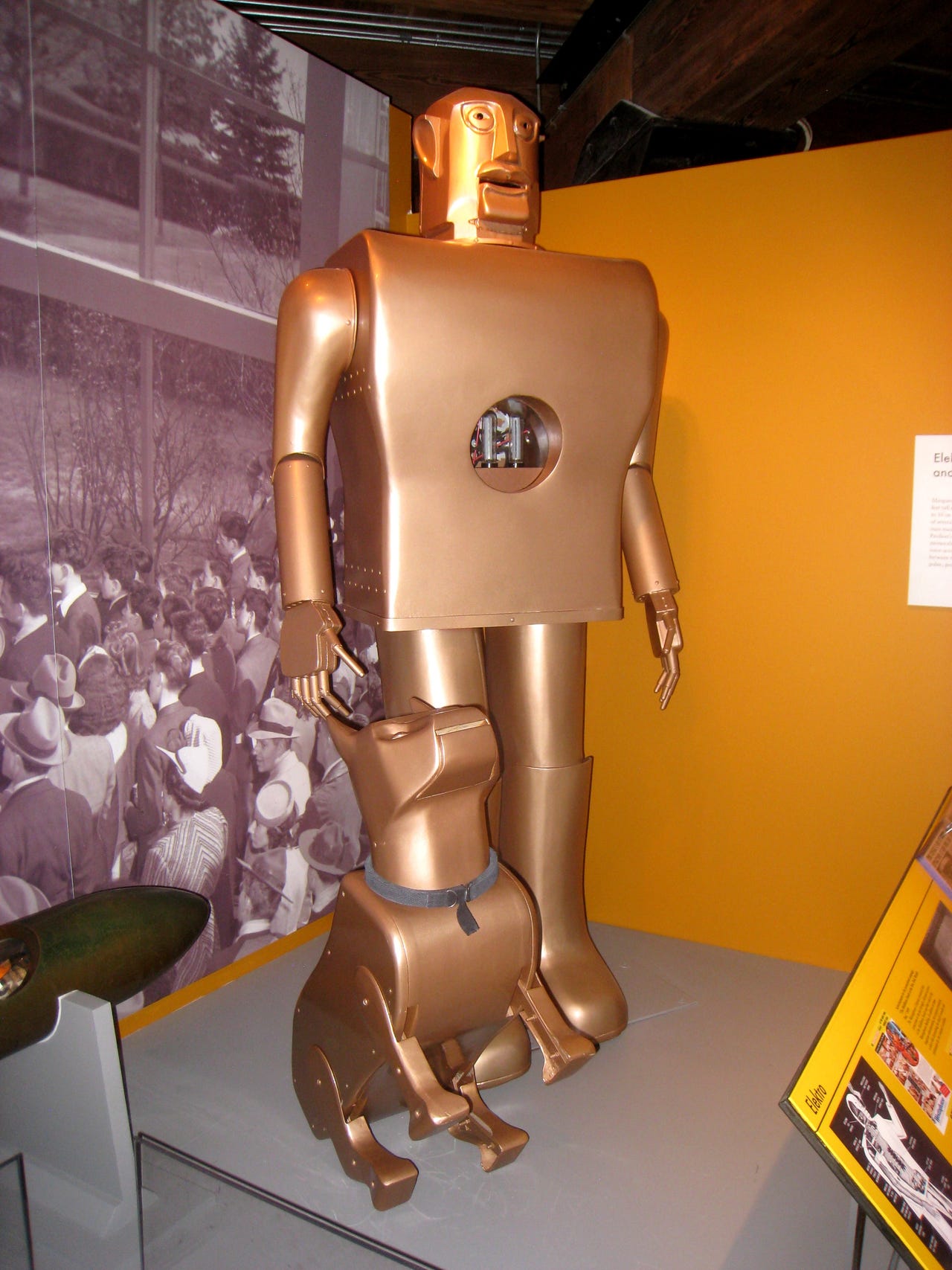Beep Boop Bop: A brief history of robots, Part I

The living machine
From the start, robots seemed to signify a breathing of actual life into that which is inanimate. Before robots were useful machines, a development that occurred in the latter half of the 20th century, they were seen as more than mechanical, as devices that should be respected and even feared.
Rossum's Universal Robots
The word robot comes from Czech writer Karel Čapek, who first used it in his 1920 play Rossum's Universal Robots. The play features a kind of biological entity built in a factory, not born.
The root from which the word derives is robota, a Czech/Slavic term meaning the work done by a peasant for a feudal lord. In Čapek's play, that's exactly what robots do: They work for humans. At least, that's what they do at first. Eventually, the robots in the play rebel against their creators and destroy humanity. Whoops.
Hephaestus, patron god of mechanical engineers
In the Iliad, Hephaestus, who might be called the patron god of mechanical engineers, created mechanical three-legged tables and bronze statues that served as assistants.
Talos
Hephaestus also made Talos, a bronze giant charged by Zeus with protecting Europa from would-be kidnappers.
Antikythera mechanism
The first device that might, with some stretch, passably be called a robot was an ancient Greek analog computer made of enmeshing bronze gears. Given the right inputs, the device accurately operated on its own to predict astronomical locations. It was an early indication of what has since become an inextricable link between robots and computers.
Su Song’s Clock
In 1088, Chinese polymath Su Song built a 30-foot clock tower that contained elaborate clockwork mannequins that danced and spun.
Al-Jazari’s water-powered automata
Al-Jazari, a 12th century Muslim inventor, built several water-powered musical automata, including a quartet of autonomous musicians who played instruments while floating on a lake.
Leonardo Da Vinci’s robot
As the Renaissance took hold in Europe, automatic machines became even more complex and lifelike. Leonardo da Vinci, with his rich understanding of human anatomy, wrote up plans (and may have built) a humanoid in the form of an armored Knight that could sit up and wave its arms.
Digesting Duck
French inventor Jacques de Vaucanson ran with the idea and became the toast of Paris in the early 1730s when he debuted his Digesting Duck, an automaton in the form of a duck that ate kernels and appeared to digest them.
Automata
In 1780, inventor Abbot Mical of St. Petersburg created a conversation machine, which consisted of two mechanical heads on a pedestal that conversed with one another by passing air through artificial vocal cords. There are myriad examples around this time of automata that sip tea, play instruments, and perform complex dances.
Rage against the machine
The popular culture pendulum would soon swing as the Enlightenment's optimism gave way to a new distrust of machines. The industrial revolution kept workers in factories, where they seemed to serve machines. The turn of the century also saw the dawn of mechanical warfare. Machines, no longer just marvels of amusement, became instruments of suppression and death in some corners of the collective imagination.
Tesla's remote control boat
In 1898, Nikola Tesla debuted a remote control boat in an exhibition at Madison Square Garden. Coming on the heels of a guide-by-wire torpedo invented by Thomas Edison, robots were beginning to be viewed as potential weapons that could be sent from afar and were capable of extraordinary destructive power.

Elektro, Westinghouse's Moto-Man
The interwar period gave rise to glamorous and gimmicky PR stunts involving robots. The most famous of these was Elektro, the Westinghouse Moto-Man, an imposing humanoid that could shuffle forward and chain-smoked cigarettes.
Next up: Robots in the post-war period
Prior to WWII, robots delighted and frightened. But it wasn't until the post-war period, when industry was booming in the US and a culture of productivity and technological optimism took hold, that modern robots were born and began to do real work.